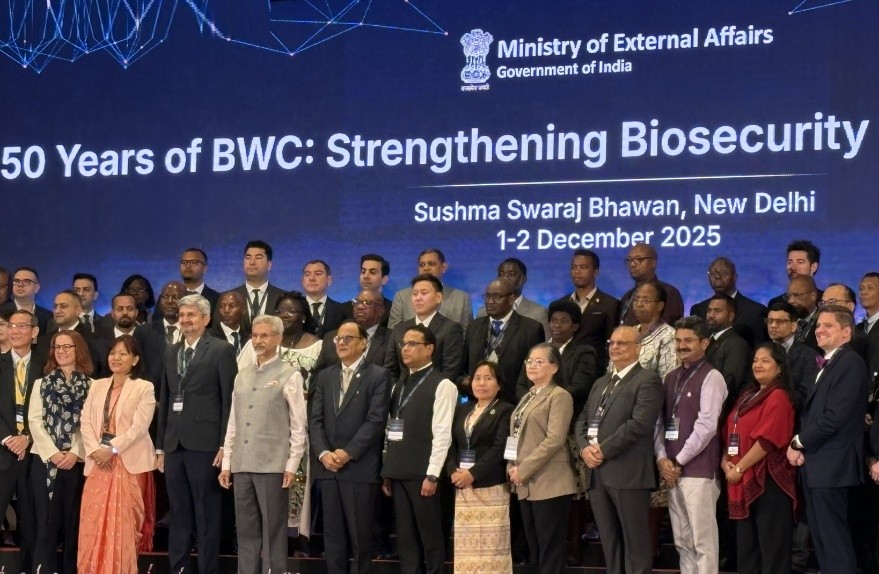Font size:
Print
Torture and India’s Justice System: Legal Gaps and Human Rights Concerns
Context:
The issue of custodial torture has gained prominence due to recent extradition cases like Sanjay Bhandari (UK) and Tahawwur Rana (US), where foreign courts cited the risk of torture in India.
- India’s failure to ratify the United Nations Convention Against Torture (UNCAT) raises concerns about its commitment to human rights.
- Lack of a comprehensive anti-torture law weakens India’s legal framework and its global human rights reputation.
Legal and Constitutional Perspectives
- International Commitments and India’s Stance
-
- India has ratified key human rights treaties:
- Universal Declaration of Human Rights (1948)
- International Covenant on Civil and Political Rights (1966)
-
- India initiated the Unilateral Declaration Against Torture (Resolution 32/64) at the UN.
- However, India has not ratified UNCAT, placing it alongside countries with poor human rights records.
- Articles 51(c) and 253 of the Indian Constitution mandate the respect and implementation of international treaties, making India’s failure to enact an anti-torture law legally inconsistent.
- Judicial Interpretation of Torture in India
-
- Supreme Court precedents uphold the right to dignity and condemn custodial torture:
- D.K. Basu (1997): Laid down guidelines for arrest and detention.
- Puttaswamy (2017): Upheld privacy as a fundamental right under Article 21.
- Nambi Narayanan (2018): Recognised wrongful prosecution and custodial torture as grave violations.
- Romila Thapar (2018): Reaffirmed judiciary’s role in protecting due process and dignity.
- Ashwani Kumar (2019): The Supreme Court declined to mandate an anti-torture law, citing separation of powers.
- The absence of legislative backing weakens judicial protections.
- Supreme Court precedents uphold the right to dignity and condemn custodial torture:
Extradition Challenges and International Implications
- Recent extradition cases highlight India’s weak safeguards against torture:
- Sanjay Bhandari (UK High Court, 2025): Denied extradition citing risk of custodial torture.
- Tahawwur Rana (US Supreme Court, 2025): Used the UK ruling to challenge extradition.
- International courts scrutinise India’s human rights record, affecting diplomatic engagements.
- The lack of a robust anti-torture law undermines India’s credibility in extradition and diplomatic negotiations.
Circumstances, Forms & Impact of Torture
- Enabling Factors
- Custodial Detentions: Interrogation-related torture in police lockups and prisons.
- Illegal Handcuffing and Excessive Force: Violation of dignity and fundamental rights.
- Extrajudicial Actions: Used in counter-terrorism operations and suppression of dissent.
- Targeting Vulnerable Groups: Women, minors, and marginalised communities face disproportionate abuse.
- Forms of Torture
-
- Physical: Beating, suffocation, electric shocks, and waterboarding.
- Psychological: Threats, isolation, sleep deprivation, and coercion.
- Sexual Violence: Custodial rape and abuse, disproportionately affecting women and children.
- Verbal and Emotional Abuse: Humiliation, communal slurs, and threats.
- Economic Exploitation: Forced bribes and extortion during detention.
- Impacts of Torture
-
- On Individuals: Leads to permanent disabilities, mental trauma, and PTSD.
- On Families: Causes emotional distress, economic strain, and social stigma.
- On Society: Erodes public trust, creates a culture of fear, and weakens state legitimacy.
Existing Legal Provisions in India
- Indian Penal Code (IPC)
- Sections 330 & 331: Criminalise causing hurt to extract confessions.
- Primarily focuses on physical torture, lacking provisions for psychological and sexual abuse.
- Criminal Procedure Code (CrPC)
-
- Section 46: Regulates arrest procedures.
- Section 50: Ensures detainees are informed of their rights.
- Section 57: Mandates production before a magistrate within 24 hours.
- Bharatiya Nagarik Suraksha Sanhita (BNSS), 2023
-
- Section 88: Criminalises custodial torture.
- Mandates regular health checks of detainees.
- Indian Constitution
-
- Article 21: Protects against torture and inhuman treatment.
- Article 22: Guarantees safeguards against arbitrary detention.
Government Data and Judicial Provisions
- NCRB (2019): Reported 1,674 deaths in judicial custody, many linked to police brutality.
- NITI Aayog (2020): Highlighted limited access to justice for victims of custodial torture.
- Landmark Supreme Court Cases:
- D.K. Basu (1997): Issued guidelines to prevent custodial violence.
- Nilabati Behera (1993): Established state liability for custodial deaths.
- PUCL v. Union of India (1997): Affirmed that national security cannot justify torture.
Solutions and Recommendations
- Independent Oversight Mechanisms: Establish independent bodies to investigate custodial torture.
- Strict Implementation of UNCAT and ICCPR: Align domestic laws with international standards.
Legislative and Policy Recommendations: Past Recommendations for an Anti-Torture Law
- Select Committee of Rajya Sabha (2010): Recommended a comprehensive anti-torture law.
- Law Commission (273rd Report, 2017): Proposed a draft law criminalising torture.
- National Human Rights Commission (NHRC): Consistently advocated for a stand-alone anti-torture law.
- Despite political and institutional consensus, no concrete action has been taken.
- Mandatory Human Rights Training: Ensure ethical interrogation practices for law enforcement.
- Legal Aid for Victims: Provide accessible legal support to torture survivors.Public Awareness: Educate citizens on their rights during arrest and detention.
- Enact a Comprehensive Anti-Torture Law: Align domestic laws with international commitments.
- Strengthen Judicial Accountability: Implement oversight mechanisms in police stations and prisons.
- Training and Sensitisation of Law Enforcement: Introduce human rights education for police and prison officials.
- Ensure Effective Remedies for Victims: Establish compensation mechanisms and fast-track judicial recourse.


